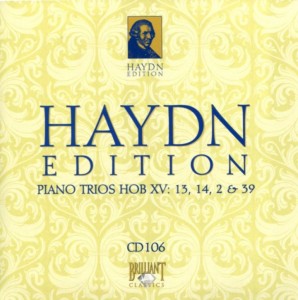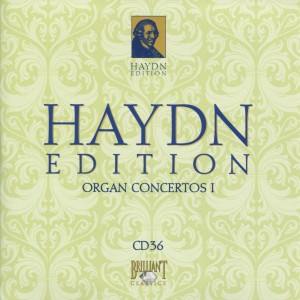I was hooked from the first few notes of Movement I (“Andante”) of Piano Trio in C Minor.
There’s a melody here!
Haydn wrote a discernible melody!
This isn’t just a well-crafted landscape of music. It’s compelling – nearly hummable – to boot.
And that’s not even taking into account the lovely piano work, which is especially extraordinary in this piece (the piano really cuts loose about 3/4 into it). And the violin passages (it switches from the piano carrying the melody to the violin carrying the melody at about the 1:00 mark).
I could listen to Piano Trio in C Minor HOB XV:13 all day long.
Piano Trio in A Flat HOB XV:14 is no slouch, though. Terrific piano work in Movement I (“Allegro moderato”). Movement II (“Adagio”) is much slower, but no less compelling, especially when the piano is tinkling away and the violin is doing its pizzicato best to arrest my attention. Movement III (“Rondo Vivace”) brings this Trio to a close in grand style.
Piano Trio in F HOB XV:2 is also quite exquisite from Movement I (“Allegro moderato”) to Movement III (“Finale: Adagio with four variations”). Movement III contains really interesting instrumentation. It’s very hard to describe (because, remember, I’m not a musicologist). But from about the 3:54 mark until the 4:25 mark it’s almost comical. The instruments would play Dee-Do-Dee-Do-Do and then there’d be a Dee! Dee! Dee!, then back to Dee-Do-Dee-Do-Do and then another rapid-fire Dee! Dee! Dee! I’d say listen for yourself, except I couldn’t find that particular clip on YouTube.
The entire CD is worth listening to again and again.
Providing the music for these wonderful Piano Trios is the Van Swieten Trio, which consists of:
Bart van Oort fortepiano
Remy Baudet violin
Jaap ter Linden cello
Here’s a list of Haydn’s piano trios. The are referred to by their Hoboken catalog names, and their date of composition is not always certain. So I’ll Continue reading


